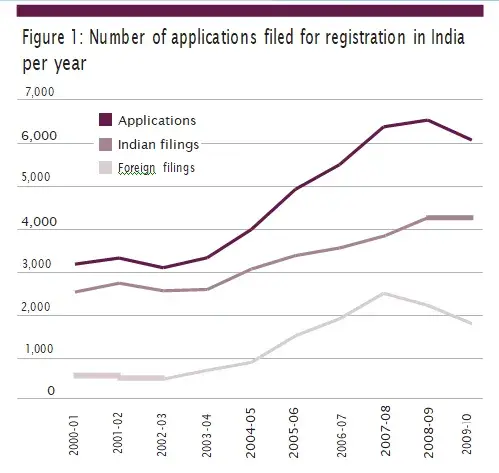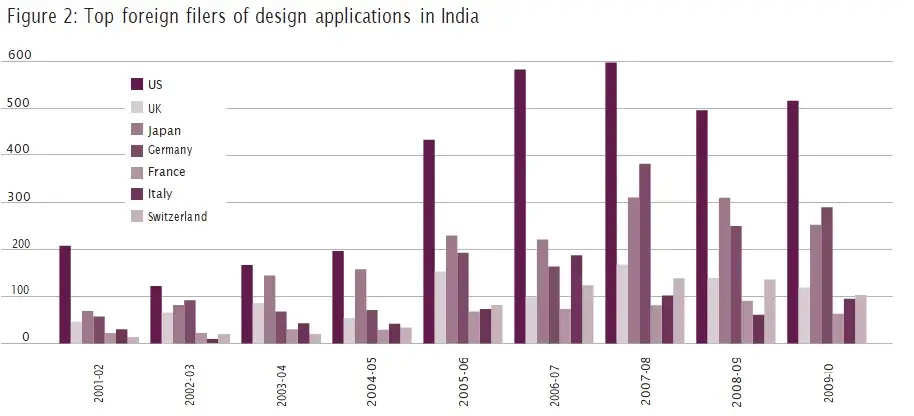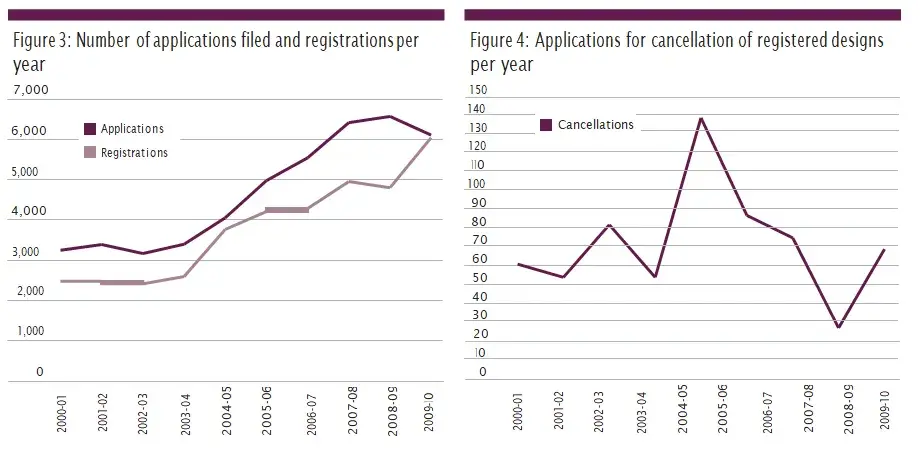Vikrant Rana of S S Rana & Co explains how designs are regulated in the Indian IP system and how recent developments have brought the country in line with the rest of the world
Indian markets are now flooded with a large variety of Indian and foreign products, thanks to globalisation and the liberalisation of the Indian economy. The increase in the Indian middle classes’ purchasing power has also led to a growing market in India and consumers are spoilt for choice when they visit shops. Notwithstanding the reliability and quality of a product, companies also need to make sure that the aesthetic character of their products is continuously maintained and improved upon to appeal to the consumer.
Today, most of the world understands the importance of protecting IP. This is shown by improvements in IP management systems, initiatives by governments and the rise in the number of applications for IP protection filed by companies and individuals.
Industrial design is one such IP that adds value to a commercial product. Companies spend huge capital and employ professional designers to come up with an innovative design to attract the target masses.
Registrability of Design
In India, the Designs Act of 2000 and the Design Rules of 2001 govern the protection of industrial designs. The design world is huge and the applications are unlimited, so it is fortunate for the Indian Patent Office that not all designs can be registered.
In Indian law, there are provisions to safeguard the interest of design owners that befit the criteria of registration in this territory.
According to the Designs Act, design registration can be obtained for new or original features of shape, configuration, pattern, ornamentation or composition of lines or colours as applied to an article, whether in two or three dimensions or both, and at the same time be capable of manufacture by industrial means whether manually, mechanically or chemically, which in the finished article “appeal to and are judged solely by the eye”. This implies that the design must appear and should be visible on the finished article for which it is meant. Any design on the inside arrangement of a box, money purse or cupboard for example, may not be considered as showing such articles in the open state, as those articles are generally put in the market in the closed state.
The essence of an article of use is its appearance and design. As well as the function of the product, its design plays a significant role in its marketability and sales. Designs are innovations which could either provide a solution to a problem due to external shapes or structure and/or to make it more attractive and aesthetic. Design refers to any creativity applied to an article, as long as it does not denote any specific function, and only the character that enhances or beautifies its presentation. The character of the article concerned, apart from its use and efficiency that appeals to the viewer or customer, is its design. The articles onto which the designs are applied should have some applicability other than merely carrying the design. For instance, a drawing or painting is not the same as wallpaper or wrapping paper or textiles.
The Act lays down the conditions for registrability of a design seeking protection. The most basic and preliminary condition for the eligibility for registration of a design of or on an article is its novelty and originality.The condition that a design must be new is assessed on whether it is found anywhere else in the world in the form of published documents or been used in public before the filing of the application for registration.

The design should also be significantly distinguishable from the known designs or their combinations and should not comprise or contain scandalous or obscene matter.
To be eligible for registration, a design has to be novel, original, moral and reproducible. However, there are still certain articles that may be all of these but have been excluded such as book jackets, calendars, certificates, forms and documents, dress making patterns, greetings cards, leaflets, maps and plan cards, post- cards, stamps and medals, labels, tokens, cards and cartoons.
To be eligible for protection under Section 2 (d) of the Act, the features of a design must not: include any mode or principle of construction; be a mere mechanical device in substance; be a Trade Mark or property mark; or be an artistic work under the Copyright Act
According to Section 15 of the Copyright Act 1957, the copyright in any design that is capable of being registered under the Designs Act, but which has not been registered, shall cease as soon as any article to which the design has been applied has been reproduced more than 50 times by an industrial process by the owner of the copyright.
In the last 10 years, about 46,660 applications have been filed at the Indian Patent Office. Only about 30% of these are foreign filings and the remaining 70% are of Indian origin. Unlike the filing trends observed for patents, Indians appear to be more active in applying for design registrations, though in absolute terms the numbers are dismal. Up until 2008, the gap between Indian and foreign filings had been narrowing, but in the past two years it has widened due to the drop in the number of foreign filings (Figure 1).
Over the last decade, companies from the USA, Japan, UK, France, Germany, Italy and Switzerland among others have been largely and consistently filing design applications in India. In terms of the high- est number of filings, leading foreign companies include Microsoft Corporation, Koninklijke Philips Electronics, Nokia, Colgate Palmolive, Honda Motor, Lego, DeBeers Centenary and Procter and Gamble.
There are 39,008 designs in force in India and about 4,200 designs are registered annually. The design registration process is simplified and if an application is in order and there are no substantive objections by the Patent Office, then a design registration certificate is issued within six months. This is also corroborated by last year’s report which shows that the number of registrations granted has increased by 12% over the previous year, indicating faster processing of design applications and their registration (Figure 3), which was also helped by a fall in the number of applications filed.
Of the 6,025 designs registered in India in the year 2009 to 2010, 3,552 registrations were Indian and 2,473 foreign.


Design Cancellation proceedings
The Indian design registration system does not provide for opposition proceedings before the registration of a design. Once the design is registered with the Indian Patent Office, its validity can be objected to under Section 19 of the Act, which covers cancellation of reg- istration, the grounds for which are:
- prior registration in India;
- prior publication in India or elsewhere before the date of priority or date of application;
- the design not being new or original;
- the design not being registrable under the Act; and
- if the design does not meet the definition under clause (d) of Section 2 of the
According to the Indian Patent Office’s annual reports, in the last 10 years an average of 72 applications are filed annually for design registration cancellations.
Many court decisions pertaining to designs have been issued in recent years, most of them related to the infringement of registered designs. The decisions are primarily in favour of the plaintiff with a few exceptions where the defendants have countered the charges and sought cancellations of the registered designs.
Recent developments
The design registration system is time bound and the fastest of all IP registration procedures. The following developments have taken place or are likely to be introduced shortly to the Indian design system.
The Indian Patent Office has released a manual on design practice and procedure for proper understanding of the filing procedure among the stakeholders. The manual is expected to make officers and applicants aware of the correct procedure involved in the prosecution of design applications, reducing the delay in registration.
The complete automation of the design registration system is in progress and the entire process will be enabled. The status of an application can already be viewed online and other online retrieval systems are available that enable the user to access full texts and images.
E-filing of design applications will be introduced shortly and it is gaining momentum in patents and trade marks. This is expected to boost the number of design registration filings too. The controller now also grants telephonic hearings and discussion of objections to the office.Given all these developments, the Indian Patent office now ensures a three-month turnaround time from filing to registration.
At par with the provisions worldwide, the design protection system in India provides the value quotient to innovators and designers in India as well as those abroad. The improvements being introduced to the system bring about a better processing of design applications.
Several local and government organisations are taking initiatives to encourage designers to exploit their IP rights and get their designs registered to ensure that the deserving artisans, creators and originators of designs are not deprived of their deserved reward. The National Institute of Design (NID) is one such organisation established by the Government of India in
The Indian design registration system does not provide for opposition proceedings before the registration of a design
1961 to encourage research, service and training in industrial design. Every year thousands of students are trained in disparate design disciplines offered by NID.
The Confederation of Indian Industry (CII) in collaboration with Department of Industrial Policy and Promotion (DIPP) and the Indian Intellectual Property Office under the Government of India also confer awards to several organisations, innovators and designers for their outstanding achievements in the development of IP in India.
Despite these initiatives to realise the full potential of Indian designers and innovators, the rate of filing of design applications by domestic companies has dropped from 80% to 60 % in the last 10 years. In absolute terms, there is huge scope and space to accommodate our national filings and promotion in this sector is more than welcome.
Related Posts
Design Cancellation Cost in India @INR1500/-*
Designs Registrability, trends and developments (Co-Operation,Indo-German Economy)


